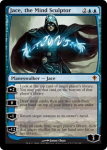Inkscape 0.48 Illustrator’s Cookbook review
As the title might suggest, this book is a cookbook about Inkscape version 0.48 written for illustrators. This book is published by Packt Publishing and falls in the categories: open-source, graphics, illustration, SVG and is one of Packt’s cookbook series.
As a fellow Inkscape-newbie and Scalable Vector Graphics (SVG) enthusiast I will be reviewing this book.
What`s the book about?
Inkscape is an open source vector graphics editor with features comparable to expensive software like Adobe Illustrator, Fireworks and ColorDraw. Inkscape uses the W3C Scalable Vector Graphics file format. SVG can also be used on webpages and is fully incorporated into HTML 5 and is therefore a drawing technology of the near-future.
Inkscape can be downloaded from inkscape.org
Who is this book written for?
This book is written for people without experience with vector graphics design software and can also be used for people new to vector graphics (while moving away from Photoshop) and people who want to learn Inkscape.
This book is also for the intermediate users who want to improve their toolkit and increase their workflow.
To use this book you have to have Inkscape 0.48 installed as well as a text editor with programming functions. An installed version of Python is also recommended but not necessary.
Windows users could also use PortableApps.com version of Inkscape.
Continue readingKor cards
Bye Bye Kor deck, hello collection
As announced today, 20June 2011 the following two cards are banned from standard:
- Jace, the Mind Sculptor
- Stoneforge Mystic
The rule will be effective from 1 July 2011.
For me it has a plus and a downside:
- Plus: these cards will be cheaper, I want one Jace and three Stoneforges to complete my collection
- Down: Stoneforge Mystic will be lacking from my full-Kor deck.
- Jace, the Mind Sculptor
My Graded Browser Support for Q3 2011
Aside
Since there is no update for Yahoo`s YUI Graded Browser Support in Q2 I`ve made my own list:
A-graded:
- Firefox 4
- Firefox 5
- Safari 5
- Safari for iOS 4
- Internet Explorer 9
- Internet Explorer 8
- Google Chrome 11
- Google Chrome 12
- WebKit for Android OS 2.2
- WebKit for Android OS 3.0

